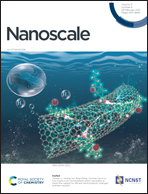The modulation effect of charge transfer on photoluminescence in metal–organic frameworks†
Abstract
Metal–organic framework (MOF) nanomaterials with distinct matrix coordination-induced emission (MCIE) and quenching (MCIQ) effects were designed. The MOF structure can effectively restrict the intramolecular rotation of the organic linkers and enable the excited nanoparticles to exhibit the MCIE effect. However, if the ligand-to-metal charge transfer (LMCT) process occurs in the MOF structure, the fluorescence will be quenched and the excitation energy released in the form of non-radiative energy. When an electron donor is added to block the LMCT process, as expected, the fluorescence of the MOF nanomaterials is recovered. Therefore, the intramolecular LMCT process acts as a fluorescent switch in MOF nanomaterials that can effectively quench or enable their fluorescence. Additionally, the LMCT process is not affected by the morphology of the coordination compounds, even when the MOF nanomaterials are ground into amorphous structures. These results confirm that the fluorescence of MOF nanomaterials can be regulated by the LMCT process. This study has significance for guiding the design and synthesis of MOF nanomaterials with photoluminescence properties.

- This article is part of the themed collection: 2021 Nanoscale HOT Article Collection


 Please wait while we load your content...
Please wait while we load your content...